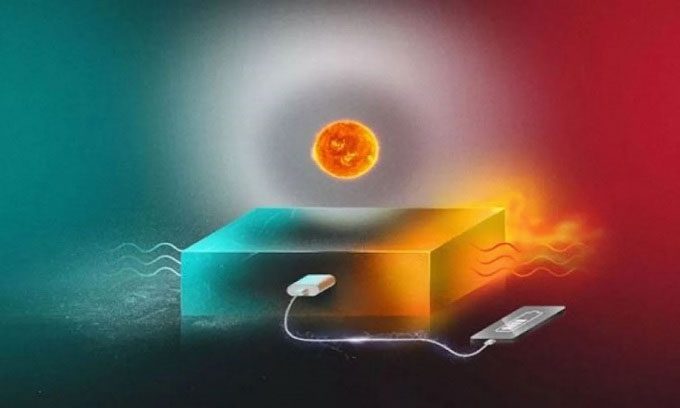Researchers at Chalmers University of Technology have designed an energy system to store solar energy in liquid form for up to 18 years.
By connecting to a thin thermoelectric generator, the research team demonstrated that the system can produce electricity, laying the groundwork for solar-powered charging devices on demand. Named the Molecular Solar Thermal System (MOST), this technology, developed over more than a decade, focuses on a specially designed molecule made of carbon, hydrogen, and nitrogen. When exposed to sunlight, the atoms within the molecule rearrange to change its shape and transform it into an energy-rich isomer (organic compounds with the same molecular formula) that can be stored in liquid form.

Simulation of using the MOST system to charge mobile phones. (Photo: Chalmers University of Technology)
The energy collected by the MOST system can be stored in liquid form for up to 18 years before a catalyst converts the molecule back to its original shape and releases energy in the form of heat. The research team at Chalmers is collaborating with scientists at Shanghai Jiao Tong University. They are using a compact thermoelectric generator to convert that heat into electricity. The research findings were published in the journal Cell Reports Physical Science.
“The generator is a super-thin chip that can be integrated into electronic devices such as headphones, smartwatches, and phones,” said researcher Zhihang Wang from Chalmers University of Technology. “So far, we have only produced a small amount of electricity, but the new results show that the design actually works. The results are very promising.”
The current power output of the proof-of-concept model is 0.1 nW (one watt equals one billion nanowatts), which may seem quite small, but scientists see significant potential in the MOST system, helping to address the intermittent nature of solar energy by storing it for months or years and using it when needed.
According to the research team leader Kasper Moth-Poulsen, a professor in the Department of Chemistry and Chemical Engineering at Chalmers University of Technology, this is a new way to generate electricity from solar energy. We can use solar energy to produce electricity regardless of the weather, time of day, season, or geographical location. MOST is a closed-loop system that can operate without emitting carbon dioxide.
After demonstrating that the system can produce electricity, the research team is focusing on improving performance while developing affordable commercial solutions for charging electronic devices and heating homes.




















































